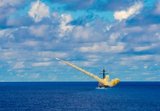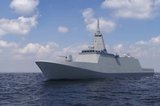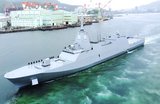Royal Navy's MEWSIC protection system passes critical tests
MEWSIC will be installed on Type 45 destroyers, Queen Elizabeth aircraft carriers and future ships. (Photo: Babcock)
The UK Royal Navy’s Maritime Electronic Warfare System Integrated Capability (MEWSIC) electro-magnetic warfare system, which has been designed to protect surface vessels, has passed its critical design review (CDR).
The £100 million (US$123 million), 13-year contract awarded to the industry consortium of Babcock, Elbit Systems UK and QinetiQ in 2021 and completion of CDR will mean the system can move onto manufacture, testing and acceptance.
The CDR was part of the first phase of the wider £500 million Maritime Electronics Warfare Programme and also included on-shore facilities delivering training, trials and acceptance.
Once operational, MEWSIC will allow for increased detection and identification of radar signals over a greater range than currently possible, aiding faster operational decision-making, enhanced situational awareness and improved ship protection.
MEWSIC will lead to the next generation of Radar Electronic Support Measure (RESM) and EW Command and Control (EWC2) equipment being installed on Type 45 destroyers, Queen Elizabeth aircraft carriers, and the Type 26 and Type 31 frigates being built at Govan and Rosyth shipyards, respectively, in Scotland.
More from Naval Warfare
-
![Future of the Canadian Patrol Submarine Project is still unclear]()
Future of the Canadian Patrol Submarine Project is still unclear
The Canadian government remains tight-lipped on the timeline and funding required for the next steps of its Canadian Submarine Patrol Project, which should offer improved capabilities for the country’s navy.
-
![Mitsubishi eyes future with Australia’s Mogami selection]()
Mitsubishi eyes future with Australia’s Mogami selection
With Australia’s selection of the Mogami-class for Project Sea 3000, Mitsubishi is investigating local production in the next decade as potential export opportunities emerge.
-
![Hanwha wins Australian government approval to increase its stake in Austal]()
Hanwha wins Australian government approval to increase its stake in Austal
The contract would mean the two shipbuilders can collaborate strategically and enhance shipbuilding capabilities in Western Australia.





















